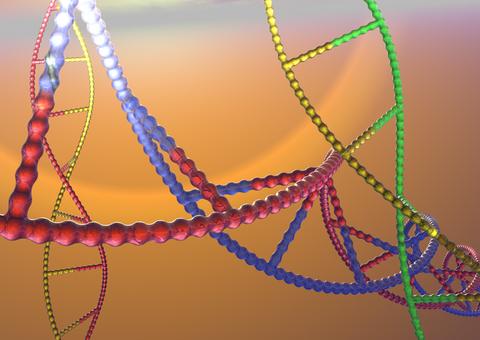
Bio-Informatics and Modeling (BIM) - Biological Data, Artificial Intelligence, and Mathematical Models
Navigating the Data-Driven Frontier of Biology
As biology evolves into a profoundly data-rich science, the need for experts who can bridge the gap between experimental biological sciences and computational sciences has never been greater. Our Master's Program in Bioinformatics and Modeling (BIM) is designed to equip you with the interdisciplinary skills required to excel in this dynamic field.
Program Overview
This comprehensive program integrates core concepts from biology—including genetics, genomics, evolution, and neurosciences—with cutting-edge computational methodologies such as statistics, machine learning, artificial intelligence, and complex systems modeling. By blending these disciplines, we prepare you to tackle complex biological questions using advanced data analysis and computational tools.
Affiliated with both the Master’s in Computer Science (Informatique) and the Master’s in Molecular and Cellular Biology (BMC), the BIM program welcomes students from diverse academic backgrounds. Whether you come from a computational field or the life sciences, the program provides an accessible pathway to gaining expertise in bioinformatics.
As part of the 4EU+ European University Alliance, the BIM program is also a member of a European network of bioinformatics master’s programs, with partner institutions in Heidelberg, Prague, Warsaw, and Milan. This collaboration offers shared courses, joint student projects, and fosters international exchange opportunities, allowing students to benefit from diverse perspectives and expertise across Europe.
For more information, visit the BIM web page.
Specialized Tracks
The BIM program offers two distinct tracks, allowing you to tailor your education to your interests and career goals:
Classical Track in Bioinformatics and Modeling:
This track focuses on molecular-level data and its analysis, with an emphasis on genetics, genomics, evolution and systems biology. Students in this track will master cutting-edge computational approaches for understanding the structure, function, and interaction of molecules in biological systems.
Numerical Health Track (in collaboration with IMA):
In this newly developed track, created in partnership with the Imaging Master Specialisation (IMA), the focus shifts toward biomedical applications. This track emphasizes numerical health, exploring computational techniques in imaging, health data analysis, and medical diagnostics. Ideal for students aiming to apply bioinformatics in a healthcare or clinical setting, this track blends advanced data science with a deep understanding of biomedical challenges.
What You'll Learn
- Genetics & Genomics: Understand the structure, function, and evolution of genomes. Learn how to analyze genetic data to uncover insights into heredity and variation in organisms.
- Evolutionary Biology: Explore the mechanisms of evolution and how they shape the diversity of life. Use computational models to study evolutionary processes.
- Structural Biology: Discover the world of biomolecular structures. Predict protein and RNA structures from sequences.
- Neurosciences: Delve into the complexities of the nervous system and apply computational techniques to neurological data.
- Statistical Analysis: Acquire robust statistical skills to interpret and manage large biological datasets effectively.
- Machine Learning & AI: Harness artificial intelligence to predict biological patterns and outcomes. Develop algorithms that can learn from and make decisions based on data.
- Complex Systems Modeling: Learn to model biological systems to understand their behavior and interactions at various scales.
- Biomedical Applications: For those in the Numerical Health track, develop expertise in medical imaging and biomedical data analytics to solve pressing challenges in healthcare.
Follow these links for a description of the programme of the first and the second year.
Why Choose This Program?
- Interdisciplinary Curriculum: Gain a holistic education that seamlessly integrates biology with computational sciences.
- Specialized Tracks: Choose between molecular bioinformatics or numerical health to match your career aspirations.
- Hands-On Experience: Participate in research projects that offer real-world experience in data analysis and problem-solving.
- Expert Faculty: Learn from a diverse team of professors who are leaders in their respective fields.
- Career Opportunities: Prepare for a thriving career in academia, biotechnology, pharmaceuticals, healthcare, or biomedical research, where bioinformatics and computational health are in high demand.
Who Should Apply?
This program is ideal for students with a background in computer science, mathematics, or a related field who are eager to become pioneers in the rapidly expanding world of data-driven bioinformatics and its biomedical applications. Students with a background in biology, please apply via the BIM BMC program.
Join Us in Shaping the Future of Biology and Healthcare!
Contacts
Responsible for the course
- Alessandra CARBONE
- Martin WEIGT
Secrétariat
